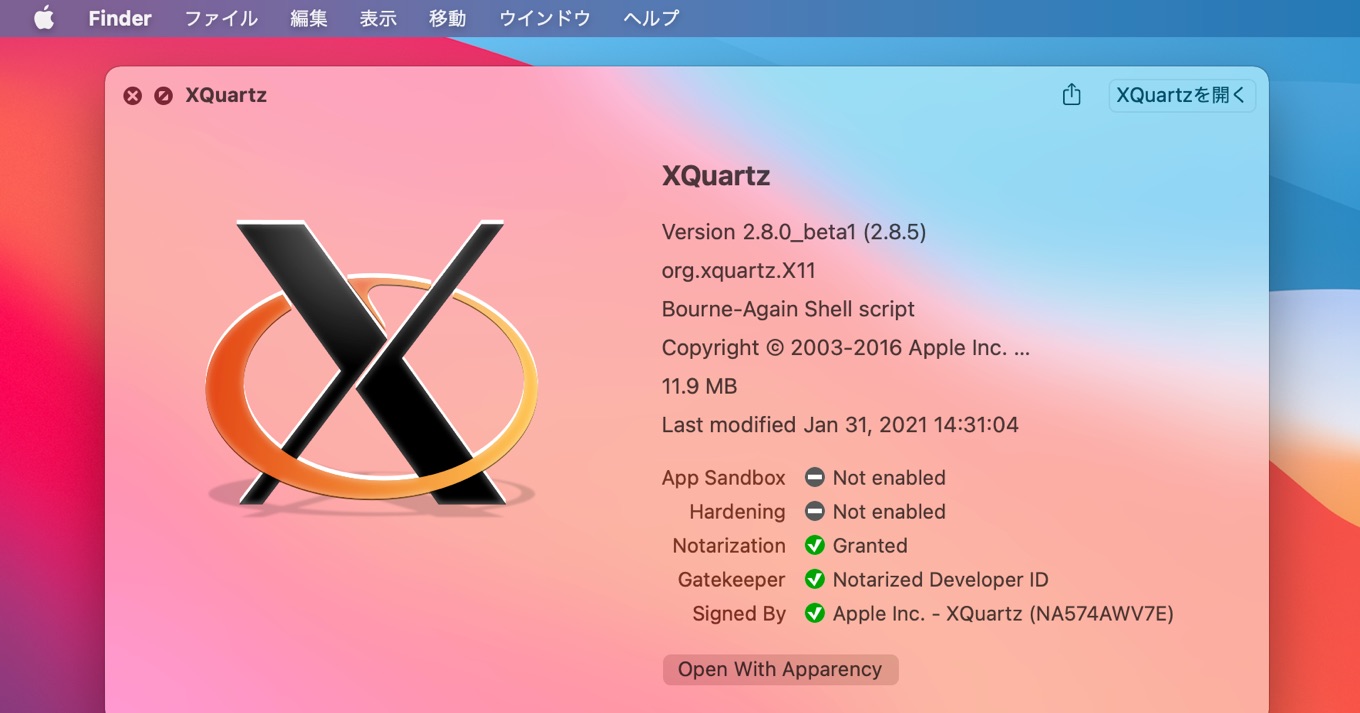
- #Xquartz ubuntu for free
- #Xquartz ubuntu install
- #Xquartz ubuntu update
- #Xquartz ubuntu full
- #Xquartz ubuntu software
Then start the instance and set the DISPLAY environment variable to the server display on the host IP: # replace `xx.xx.xx.xx` with the IP address obtained above To configure the client (that is, the Multipass instance) we will need the host IP address, which can be obtained with the console command ipconfig. An icon will show up in the dock: we are done with the X server. Pressing “Next” will give us then the option to save the settings, and finally we can start the X server. “Next” will show us the “Extra settings”, and there we should activate the option “Disable access control”. The “Next” button brings us to the “Client startup” window, on which we should choose “Start no client”. In the first screen, we should choose “Multiple windows” and set the display number leaving it in -1 is a safe option.
#Xquartz ubuntu install
The first step would be thus to install VcXsrv and run the X server through the newly created start menu entry “XLaunch”.
#Xquartz ubuntu for free
Other options would be Xming (however, newest versions are paid but older versions can still be downloaded for free from their SourceForge site) or installing an X server in Cygwin. Windows knows nothing about X, therefore we need to install an X server. The procedure for MacOS should be almost the same as for Linux, but I don’t have a Mac at hand for testing it. $ ssh -X test the setting running on the instance some program: $ sudo apt install x11-appsĪ small window containing the X logo must show up. Finally, we can log in to the instance using X forwarding doing # replace `xx.xx.xx.xx` with the IP address obtained above Then, check the IP address of the instance, using multipass info rocking-squirrel. Use ssh-keygen to create them and retry the copy. If the file ~/.ssh/id_rsa.pub does not exist, it means that the SSH keys must be created. We can do this with the following command (replace the example instance name with yours): $ multipass exec rocking-squirrel - bash -c "echo `cat ~/.ssh/id_rsa.pub` > ~/.ssh/authorized_keys" We will allow our user in the host to log in to the Multipass instance through ssh, by copying our public key, in file ~/.ssh/id_rsa.pub to the list of authorized keys of the instance, in file ~/.ssh/authorized_keys. Unfortunately, multipass shell does not let the user to pass extra parameters to ssh, so we cannot use the shell through Multipass. However, we will forward through ssh in order to avoid struggling with xauth stuff. We have the possibility here to be a bit more secure than on Windows, by using authentication in X forwarding.
#Xquartz ubuntu software
Linux and MacOS run X by default and the instance, so no extra software in the host is needed. Instead, we can use X11 to connect the applications in the instance with the graphical capabilities of the host.
#Xquartz ubuntu full
It turns out that this setup is simpler than the RDP approach, because we do not need the Multipass instance to deploy a full desktop. It might be the case that we only want Multipass to launch one application and to see only that window, without having the need for a complete desktop. There, we enter the virtual machine’s IP address, set the session to XOrg and enter the username and password we created on the previuos step. On Windows, we can connect to the RDP server with the “Remote Desktop Connection” application. To connect on MacOS, we can use the “Microsoft Remote Desktop” application, from the Mac App Store. Thus, we will use the IP address 10.49.93.209 to connect to the RDP server on the instance. We then quit the Ubuntu shell on the instance with the logout command and find out in the host the IP address to connect to: $ multipass list

We will be asked to enter and re-enter a password.

One possibility is to set a password to the default ubuntu user. Then, we need a user with a password in order to log in.
#Xquartz ubuntu update
For this, we must log in to the running Multipass instance first: $ multipass shell headbanging-squidĪnd, once inside the instance, $ sudo apt update For this reason, a desktop environment must be installed (we use ubuntu-desktop but there are as many other options as flavors of Ubuntu exist), along with the RDP server (we will use here xrdp but there are also other options such as freerdp). The images used by Multipass do not come with a graphical desktop installed. Other methods include VNC and running a Mir shell through X11 forwarding (as described here). In this document, we describe two ways: RDP (Remote Display Protocol) and plain X11 forwarding. Graphical desktop can be viewed in various ways. Use a different terminal from the system icon.Authenticate clients with the Multipass service.


 0 kommentar(er)
0 kommentar(er)
